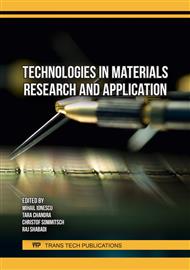p.81
p.87
p.95
p.103
p.109
p.117
p.123
p.129
p.135
Statistical Methods for Predicting of the Quality of Aluminum Ingots
Abstract:
In recent years, methods from Data Science and Artificial Intelligence have become more and more important in various fields of economy and everyday life. Those methods are, for instance, used in context of driving assistance systems or queries in search engines. Our current works aims at developing and/or improving methods from statistics and machine learning to select relevant features concerning the product quality of aluminum ingots. During the production of aluminum, numerous process signals, such as temperature curves, are recorded. To quantify the dependency of the ingot-quality on different signals, existing statistical methods need to be adjusted and extended to the timeseries setting. The first problem tackled is the definition of a criterion numerically describing the quality of the ingots and therefore allowing to compare ingots with respect to their quality (independent of the final format of the product). A second, nontrivial challenge is to detect those process signals relevant for the ingot quality and account for possible interrelations. Our contribution sketches how timeseries information can be aggregated/discretisized and describes various candidate approaches for features selection.
Info:
Periodical:
Pages:
109-116
Citation:
Online since:
December 2023
Price:
Сopyright:
© 2023 Trans Tech Publications Ltd. All Rights Reserved
Share:
Citation:



